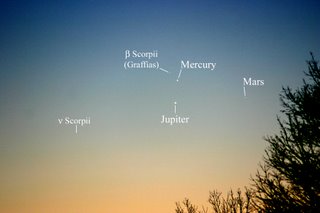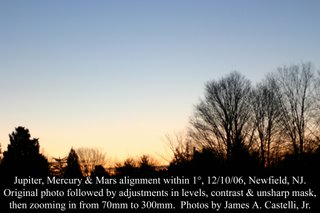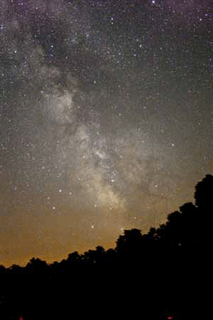Cherry Springs Horizon Panoramic, 5/18/07
4-and-a-half hour Horizon Panoramic at Cherry Springs. This animated gif might seem similar to the one posted below, but it differs in several ways:
1. The first was taken in New Mexico, this one in Cherry Springs, PA.
2. The first was taken in March, this one in May.
3. The first divides the horizon into roughly 60 frames (6 degrees movement between each frame), this one divides it into 90 frames (4 degrees movement between each frame).
4. The first uses a minute pause between each shot, this one uses two minutes - thus, the second movie really captures 2.5 more hours of sky movement, which should be more visible in this movie.
5. The first shows Saturn in Leo and the Winter Milky Way setting, this one shows Jupiter in Scorpius and the Summer Milky Way rising.
Otherwise they both start and stop with Polaris near the center of the image, and each image is a minute exposure.

1. The first was taken in New Mexico, this one in Cherry Springs, PA.
2. The first was taken in March, this one in May.
3. The first divides the horizon into roughly 60 frames (6 degrees movement between each frame), this one divides it into 90 frames (4 degrees movement between each frame).
4. The first uses a minute pause between each shot, this one uses two minutes - thus, the second movie really captures 2.5 more hours of sky movement, which should be more visible in this movie.
5. The first shows Saturn in Leo and the Winter Milky Way setting, this one shows Jupiter in Scorpius and the Summer Milky Way rising.
Otherwise they both start and stop with Polaris near the center of the image, and each image is a minute exposure.




